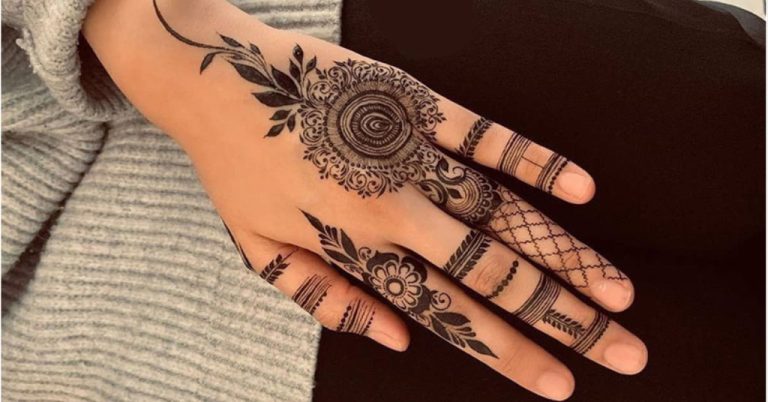Around the world, mehndi, commonly referred to as henna, is an essential component of cultural and traditional festivities. Arabic mehndi designs are distinguished from other mehndi art styles by their exquisite patterns, fluidity, and classic elegance. These intricately beautiful designs, which have gained immense popularity worldwide, have their origins in the Arab world. We'll delve into the fascinating realm of Arabic mehndi designs in this blog, examining their significance, traits, and history.

A Brief Look at History:
Arabic mehndi patterns have a long and illustrious history that spans several centuries. Arab nations and their surrounding areas have long engaged in the art of henna application as a means of body adornment and cultural expression. The designs changed with time, absorbing different styles and elements from other cultures. Arabic mehndi designs started to take shape. These designs are known for their elegance, simplicity, and focus on free-flowing patterns.
Arabic Mehndi Designs' Qualities:
Floral Patterns: Arabic mehndi designs frequently have intricate floral patterns; roses, lotuses, and peonies are common floral options. These patterns stand for prosperity, love, and beauty.
Vine and Leaf Patterns: Arabic mehndi designs are given a sense of fluidity by the addition of vines and leaves, which flow smoothly through the design to produce a symmetrical, organic appearance.
Use of Negative Space: Arabic mehndi designs are renowned for their deft use of this design element. By exposing some skin in specific places, this technique lets the design breathe and improves its overall aesthetic appeal.
Geometric Shapes: Arabic mehndi designs often feature geometric shapes like triangles and dots. These components preserve the traditional spirit of the art form while introducing a contemporary flare.
Bold Outlines: The elaborate patterns in Arabic mehndi designs are frequently defined by bold outlines. The designs are more visible and stand out on the skin because of their boldness.
Arabic Mehndi Designs' Importance:
Arabic mehndi designs are significant in many ways, both culturally and symbolically:
Festivals and Celebrations: Arabic mehndi is a staple of festivities, particularly festivals and weddings. Bridal parties frequently adorn their hands and feet with elaborate designs that represent happiness, beauty, and fortunate beginnings.
Creating Art: The mehndi application technique facilitates artistic expression. Arabic mehndi designs are a popular way for both individuals and artists to express their unique styles and creative abilities.
Cultural Identity: The preservation of Arabic mehndi designs is aided by them. As a visual representation of heritage, the patterns and motifs frequently represent the customs and values of the Arab world.
Arabic mehndi designs are a reflection of culture, history, and artistic expression rather than just beautiful patterns applied to the skin. With their classic elegance, these designs never go out of style, whether they are worn for festivals, weddings, or other special occasions. Arabic patterns continue to be a representation of beauty, tradition, and the unbreakable bond between the past and present as mehndi art develops.




